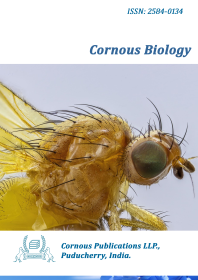

Background: Green chemistry utilizes methods that are less toxic for the environment by reducing hazardous substance production and improving reaction efficiency. By using ultrasound-catalyzed reactions, it is possible to reduce reaction times drastically and achieve higher yields. Chalcones can be used for synthesizing pyrazoles using this method, as these pyrazoles have good anti-bacterial potential.
Methods: Pyrazole derivatives were synthesized by reacting chalcones with hydrazine hydrate in an ultrasonicator. The compounds were characterized by TLC, melting point, FTIR, and ¹H NMR. ADMET studies were performed in software to evaluate drug-likeness. Docking studies were performed in PyRx software, and FMO calculations were done using ORCA software.
Results: Docking studies for antibacterial potential showed compound B5 had the strongest antibacterial binding (-8.8 kcal/mol), which is better than ciprofloxacin (-7.4 kcal/mol). For antifungal, B1 and B8 had higher affinities (-8.7 kcal/mol), compared to fluconazole (-7.5 kcal/mol). Quantum calculations revealed B5 and B9 had the lowest SCF energies, indicating greater stability, while variations in dipole moments suggested differences in polarity affecting solubility and interactions. Compounds B5 and B6 showed consistent antibacterial and antifungal activity across tested strains.
Conclusion: With the growing challenge of anti-bacterial resistance, developing effective and sustainable anti-bacterial agents is crucial. This study efficiently synthesized pyrazole derivatives via ultrasound-assisted green chemistry, showing promising anti-bacterial activity and potential for further optimization.
chalcones, pyrazoles, ultrasonication, molecular docking, anti-bacterial, anti-fungal
Ivanković, A., Dronjić, A., Bevanda, A. M., & Talić, S. (2017). Review of 12 principles of green chemistry in practice. International Journal of Sustainable and Green Energy, 6(3), 39-48.
Anastas, P. T., Kirchhoff, M. M., & Williamson, T. C. (2001). Catalysis as a foundational pillar of green chemistry. Applied Catalysis A: General, 221(1-2), 3-13.
Banerjee, B. (2017). Recent developments on ultrasound assisted catalyst-free organic synthesis. Ultrasonics Sonochemistry, 35, 1–4.
Rudrapal, M., Khan, J., Dukhyil, A. A., Alarousy, R. M., Attah, E. I., Sharma, T., Khairnar, S. J., & Bendale, A. R. (2021). Chalcone scaffolds, bioprecursors of flavonoids: Chemistry, bioactivities, and pharmacokinetics. Molecules, 26(23), 7177.
Mahmood, S., Khan, S. G., Rasul, A., Christensen, J. B., & Abourehab, M. A. S. (2022). Ultrasound Assisted Synthesis and In Silico Modelling of 1,2,4-Triazole Coupled Acetamide Derivatives of 2-(4-Isobutyl phenyl) propanoic acid as Potential Anticancer Agents. Molecules, 27(22), 7984.
Bukhari, S. N. A., Jasamai, M., & Jantan, I. (2012). Synthesis and biological evaluation of chalcone derivatives (mini review). Mini-Reviews in Medicinal Chemistry, 12(13), 1394–1403.
Teli, G., & Chawla, P. A. (2021). Hybridization of imidazole with various heterocycles in targeting cancer: A decade's work. ChemistrySelect, 6(19), 4803–4836.
Jaiswal, S. (2019). Five and six membered heterocyclic compound with anti-bacterial activity. Journal of Modern Trends in Science and Technology, 5, 36–39
Prasad, Y. R., Raja Sekhar, K. K., Shankarananth, V., Sireesha, G., Swetha Harika, K., & Poroikov, V. (2011). Synthesis and in silico biological activity evaluation of some 1,3,5-trisubstituted-2-pyrazolines. Journal of Pharmacy Research, 4(2), 558–560
Karrouchi, K., Radi, S., Ramli, Y., Taoufik, J., Mabkhot, Y. N., Al-Aizari, F. A., & Ansar, M. H. (2018). Synthesis and pharmacological activities of pyrazole derivatives: A review. Molecules, 23(1), 134.
Bécerra, D., & Castillo, J.-C. (2025). Recent advances in the synthesis of anticancer pyrazole derivatives using microwave, ultrasound, and mechanochemical techniques. RSC Advances. https://doi.org/10.1039/D4RA08866B
Sharif, M. S., Aqeel, M., Haider, A., Naz, S., Ikram, M., Ul-Hamid, A., Haider, J., Aslam, I., Nazir, A., & Butt, A. R. (2021). Photocatalytic, bactericidal and molecular docking analysis of annealed tin oxide nanostructures. Nanoscale Research Letters, 16, 1–6.
Rathee, A., Solanki, P., Emad, N. A., Zai, I., Ahmad, S., Alam, S., Alqahtani, A. S., Noman, O. M., Kohli, K., & Sultana, Y. (2024). Posaconazole-hemp seed oil loaded nanomicelles for invasive fungal disease. Scientific Reports, 14(1), 16588.
Loh, W. S., Quah, C. K., Chia, T. S., Fun, H. K., Sapnakumari, M., Narayana, B., & Sarojini, B. K. (2013). Synthesis and crystal structures of N-substituted pyrazolines. Molecules (Basel, Switzerland), 18(2), 2386–2396.
Singh, P., Jagmohan, S., Negi, G., Pant, J. N., & Rawat, M. S. M. (2010). 5-(3-Nitrophenyl)-3-phenyl-4,5-dihydro-1H-pyrazole-1-carbaldehyde. Molbank, 2010(1), M650.
Caminero Gomes Soares, A., Marques Sousa, G. H., Calil, R. L., & Goulart Trossini, G. H. (2023). Absorption matters: A closer look at popular oral bioavailability rules for drug approvals. Molecular informatics, 42(11), e202300115.
Dong, J., Cao, D. S., Miao, H. Y., Liu, S., Deng, B. C., Yun, Y. H., Wang, N. N., Lu, A. P., Zeng, W. B., & Chen, A. F. (2015). ChemDes: an integrated web-based platform for molecular descriptor and fingerprint computation. Journal of cheminformatics, 7, 60.
Khan, M. A., Mutahir, S., Tariq, M. A., & Almehizia, A. A. (2024). Exploration of Specific Fluoroquinolone Interaction with SARS-CoV-2 Main Protease (Mpro) to Battle COVID-19: DFT, Molecular Docking, ADME and Cardiotoxicity Studies. Molecules (Basel, Switzerland), 29(19), 4721.